I can't believe that the first day of winter is less than a week away. A new report from Subaru Drive Magazine says the best way to prepare for driving in treacherous winter conditions is to service your Subaru before winter hits. As a Subaru owner who lives in snow country, I would agree. It will make driving in the snow fun if you are prepared.
Features such as Subaru's Symmetrical all-wheel drive, Vehicle Dynamics Control, and X-Mode provide models like the Forester, Crosstrek, Outback, Ascent, and other all-wheel-drive models with sure-footedness on snow and ice.
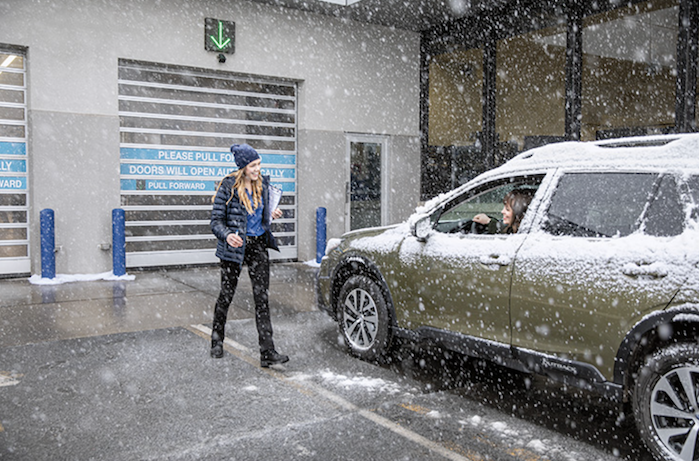
The Subaru Drive report points out it's essential to inspect the condition of components that see significant use during colder months and replace any worn items discovered. Checking your vehicle's fluids and confirming that fluid changes have been completed on schedule should also be considered at this time.
You should always consult your Subaru Warranty and Maintenance Booklet for specifics regarding maintenance intervals, and contact your Subaru retailer if you have any questions.
Here are the six best tips to prepare your Subaru all-wheel-drive vehicle for winter. Some of this report comes from Bradley Iger, a contributor to Subaru Drive.
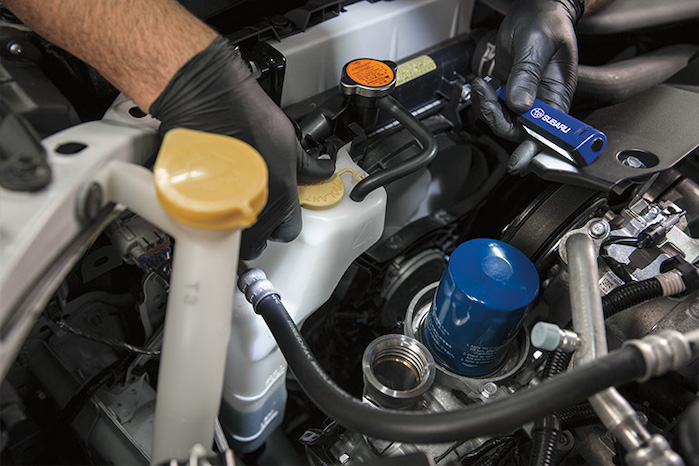
1. Start with an under-the-hood inspection.
Giving the wear items needing attention in your engine bay a good once-over can help prevent future headaches. Check the drive belts, coolant hoses, and battery cables for signs of fraying, cracking, corrosion, and other wear. Also, be sure to evaluate the condition of your battery. Colder temperatures put additional strain on the battery, especially during engine startup. A battery close to the end of its life could leave you stranded on the first cold morning of the year.
Check the exterior casing of the battery for signs of corrosion on the terminals or cables, and wipe off any dirt or debris. Any signs of leakage at the top of the casing mean it's time to replace the battery. Also, examine the brackets that secure the battery in place. They should hold the battery firmly – vibration can significantly reduce its longevity. If there are signs of wear or damage, have the brackets replaced.
Lastly, check the battery posts to ensure the terminals are securely fastened and free of corrosion or other debris. If the terminals need to be disconnected for cleaning, remember the adage "negative first, negative last." In other words, disconnect the negative terminal first, and when reconnecting, hook up the negative terminal last. The red is positive (+), and the black is negative (-).
You disconnect the negative terminal first and reconnect it last because when the negative cable is connected, all the steel in the vehicle becomes ground. If you're reconnecting the positive terminal and accidentally touch the inner fender or any other metal surface with the wrench, it will cause a short circuit and could result in – at best – a lot of sparks. At worst, it could cause an explosion if the battery emits hydrogen sulfide gas.
2. A coolant flush is recommended
Cold temperatures don't mean you don't need to keep tabs on the cooling system, but it plays a vital role during the winter. Along with regulating your engine's internal temperature, the cooling system provides heat for the climate control system. Coolant not only raises the fluid's boiling point in your radiator, but it also lowers its freezing temperature to subzero temperatures so that the coolant won't freeze in the winter.
Contaminants will collect in the coolant over time, negatively impacting the fluid's ability to do its job. That means that system flushes should be done regularly to keep everything flowing as it should. Consult your Warranty and Maintenance Booklet for the specifics on your particular model, and see your retailer to perform the service.
3. A brake fluid flush is often overlooked
Subaru recommends new brake fluid every 30,000 miles. Brake fluid is "hygroscopic" and actively absorbs moisture from the air over time. As this happens, the boiling point of the brake fluid is lowered, which can impair stopping power in demanding situations. Also, tiny debris particles can accumulate in the fluid over time, affecting brake pedal response.
Your Subaru retailer can schedule a brake fluid service during regular maintenance, such as an oil change.
20 Top Snow Driving Tips For Subaru Owners @SubaruReport @torquenewsauto#subaru #outback #forester #crosstrek #ascent #winterdriving #snowdrivinghttps://t.co/gDA2ev60pH
— Denis Flierl (@DenisFlierl) December 6, 2023
4. A cabin air filter change is essential
Like your engine, the climate control system utilizes an air filter that prevents foreign material from traveling through it – in this case, contaminants such as allergens and dust. Over time, this filter can become clogged with debris that will inhibit airflow, making it more difficult for your climate control system to regulate the temperature in the cabin.
These filters should be replaced every 12 months or 12,000 miles, depending on your environment, and installing a new one will ensure that your ventilation system performs at its best.
5. See the road with new wiper blades
Clear outward visibility is vital while driving in inclement weather, so your wiper blades must be up to the task. Most wiper blade manufacturers recommend replacing these every six to 12 months, as exposure to excessive heat, cold, and UV rays will cause the blade material to harden over time.
Windshield streaking and other issues can occur once that material loses its flexibility, so it's a good idea to preemptively ensure your wipers are ready to clean when you need them. I always recommend winter wiper blades if you live in a cold climate where you encounter snow and ice.
6. The right tires are essential for severe winter driving
All-wheel drive, advanced stability control systems, and X-Mode will keep your Subaru out of the ditch when facing poor road conditions, but that doesn't mean you can ignore your tires.
If you have all-season tires, it's essential to know that they will begin to harden when temperatures dip below about 45 degrees Fahrenheit and that hardening of the rubber adversely affects stopping distances and overall traction.
For those who live in regions that regularly see particularly low temperatures and deep snow and ice, switching over to winter/snow-rated tires during colder months is a crucial safety measure. These tires perform their best at temperatures below 45 degrees Fahrenheit and in conditions well outside the boundaries for which all-season tires are intended to serve.
Updated: Consumer Reports Best Snow Tires For Your Subaru This Winter via @SubaruReport @torquenewsauto#subaru #outback #crosstrek #forester #snowtires #snowdrivinghttps://t.co/QcxPgxIE5F
— Denis Flierl (@DenisFlierl) November 14, 2023
As great as a Subaru equipped with Symmetrical All-Wheel Drive can be in the winter, one fitted with dedicated winter/snow tires can make you look forward to a fun ski day on the mountain slope.
Check out a recent report above on winter tires for your all-wheel-drive Subaru that you may find helpful. Check out the video below for information on all-season vs. winter/snow tires.
Thanks for reading, everyone. I hope you enjoyed this Subaru winter driving story. See you tomorrow for my latest Subaru Report.
For additional articles related to new Subaru models, here are a few of my top stories you may enjoy.
My Must-Read Top Picks
- Tis The Season For Winter Driving; Having AWD Subaru Doesn’t Guarantee Safety
- CR’s Best All-Season And Snow Tires For Your Subaru This Winter
- 8 Cheap And Easy Prep Tips To Get Your Subaru Ready For Winter
Watch Winter Tires vs All-Season Tires: When All-Season Tires On Your Subaru Is The Worst Idea in Winter
I am Denis Flierl, a 12-year Torque News senior writer with 20+ years of Subaru and automotive journalism experience. I enjoy bringing you, the Subaru fans and customers, the most up-to-date Subaru news, reviews, and new model information. You'll find the latest Subaru stories on the Subaru page. Follow me on my The Dirty Subaru website, Dirty Subaru blog, SubaruReport, All Subaru, WRXSTI, @DenisFlierl, Facebook, and Instagram.
I’ve got you covered! - I cover all Subaru all the time - It’s called the “Subaru Report.” Check back daily for my expert Subaru analysis!
Please leave your comments below, share the article with friends, and post X to your followers!
photo credit: Subaru Drive



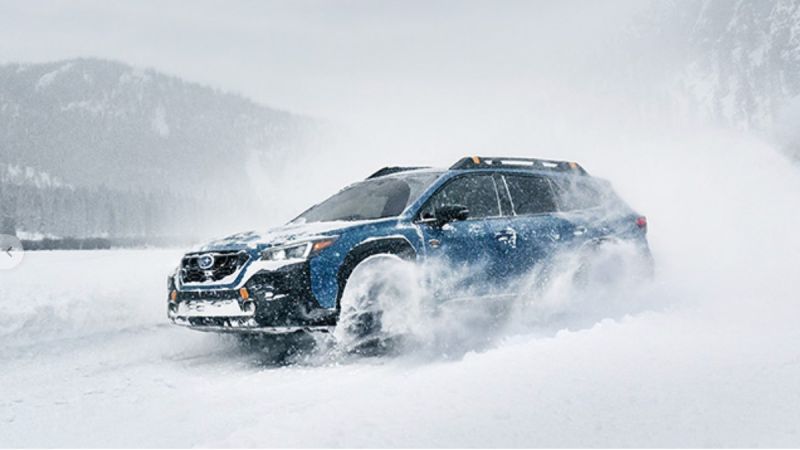




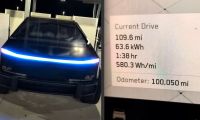
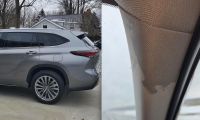
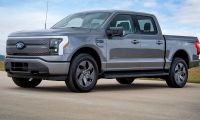
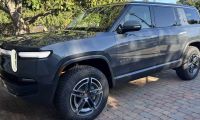

Comments
First tip should be to toss…
Permalink
First tip should be to toss out the tires if they are the Outback OEM Yokohama AVID kind. Absolutely atrocious and downright dangerous in cold weather.